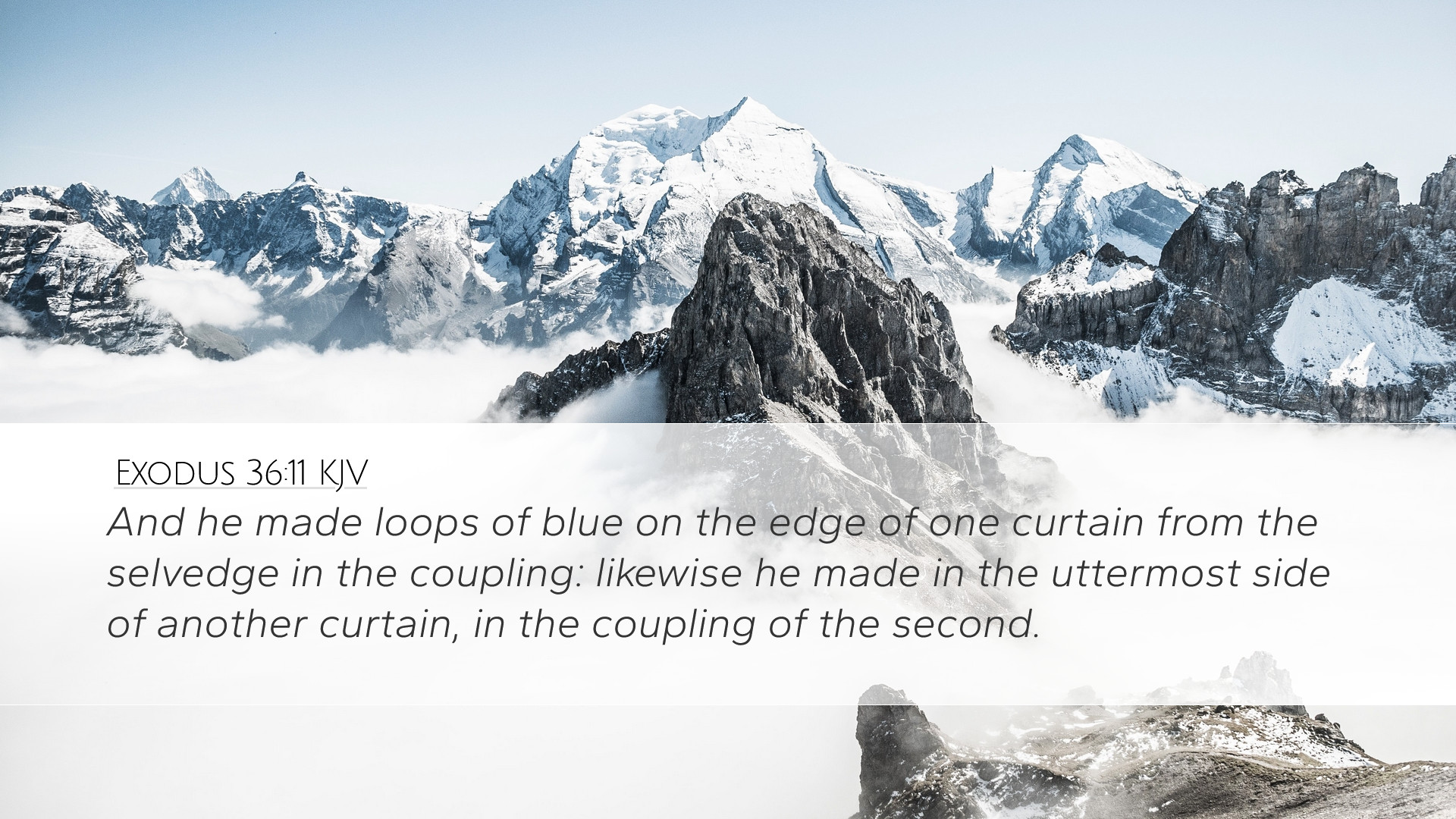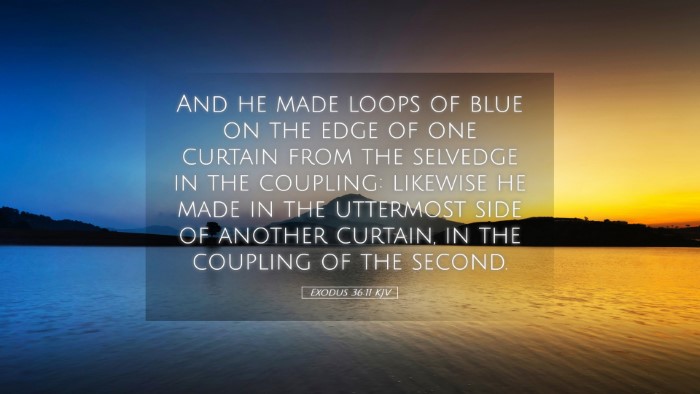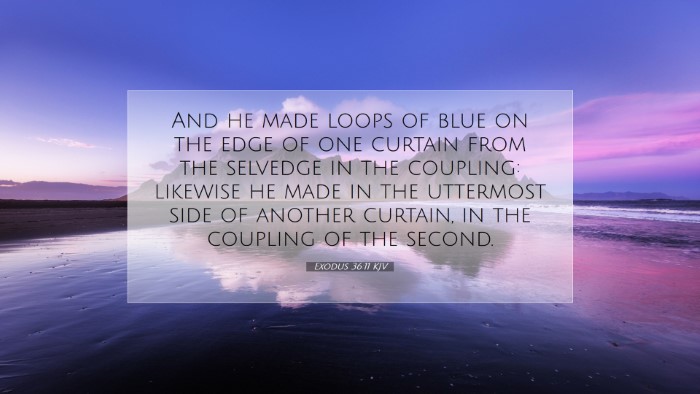Commentary on Exodus 36:11
Exodus 36:11 states: "And he made loops of blue cloth on the edge of the curtain of the curtain of the tent, together with the other curtains." This single verse captures several theological and practical insights that merit deeper exploration. The passages surrounding this verse emphasize the importance of the Tabernacle's construction and its symbolism.
1. Contextual Overview
This verse is situated within the broader narrative concerning the construction of the Tabernacle, a central place of worship for the Israelites as they journeyed through the wilderness. The detailed instructions given to Moses for building the Tabernacle serve as a blueprint not only for the physical structure but also for the spiritual significance it embodies.
2. Symbolism of the Curtain
- Separation and Holiness: The curtains represent the separation between the holy and the profane. The loops of blue cloth signal the divine nature of God, as blue is often associated with heaven and divinity in the Scriptures.
- Access to God: The structure of the curtains and their placements serve as a metaphor for access to God. Just as the loops allow for the joining of important aspects of the Tabernacle, spiritual access is made possible through Christ.
3. Insights from Key Commentators
Matthew Henry
Matthew Henry notes that each material used in the Tabernacle's construction was significant. The use of blue cloth, in particular, is a reminder of God's heavenly character. The careful craftsmanship showcases not only the necessity for beauty in God's dwelling place but also His desire for order and sanctity in worship.
Albert Barnes
Albert Barnes elaborates on the loops mentioned in the verse, suggesting that their purpose was to hold the curtains together and ensure that the Tabernacle’s components were securely integrated. This notion can be reflected spiritually, indicating the unity required within the body of Christ, as believers work together to serve God.
Adam Clarke
Adam Clarke provides additional practical insights, discussing the meticulous nature of the construction process. He emphasizes that nothing should be done carelessly in God’s service. Clarke suggests that the loops, being made of durable material, also hint at the enduring nature of divine covenants and promises, which remain despite human shortcomings.
4. Practical Applications
For pastors, students, theologians, and Bible scholars, several applications can be gleaned from this verse:
- Attention to Detail in Worship: Just as the artisans paid close attention to the construction of the Tabernacle, so too should worshippers be careful in how they approach and facilitate worship.
- Recognizing the Presence of God: The Tabernacle is a representation of God’s presence among His people. Believers today are called to recognize and honor the presence of God in their midst.
- Unity in Diversity: The different materials and colors used signify the unity among diversity in the body of Christ. Each believer has a unique role that contributes to the greater work.
5. Theological Significance
This verse serves as a microcosm of larger theological themes present throughout the Bible. It prefigures the New Testament understanding of the veil being torn (Mark 15:38) and the opening of access to God through Jesus Christ, culminating in the invitation for all to draw near (Hebrews 10:19-22).
6. Conclusion
Exodus 36:11, while a brief mention in the construction of the Tabernacle, is imbued with rich theological significance. As believers reflect on its meaning, they are reminded of God’s holiness, the importance of meticulous worship, and the call to unity and service within the body of Christ.


